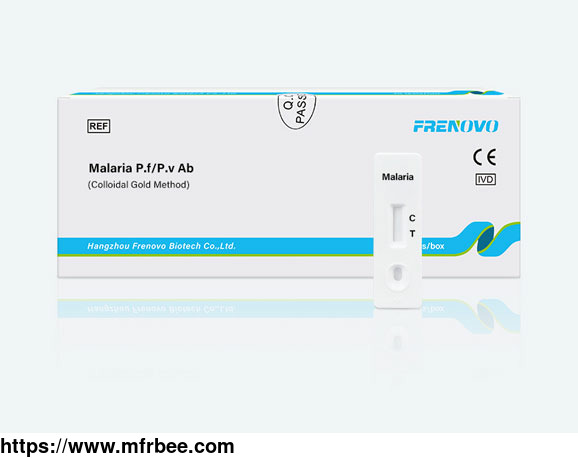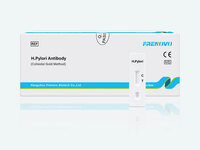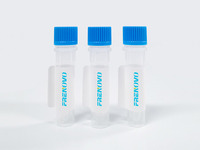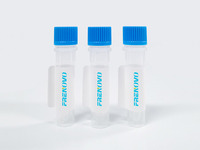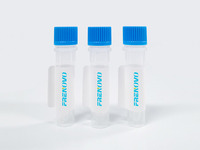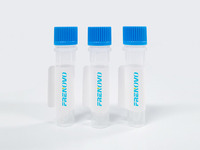Malaria (p.f/p.v) Antibody Rapid Test
Product Quick Detail
- Minimum Order
- 1000000
- Place Of Origin
- China
- Packaging
- 1test package/20test/kit
- Delivery
- 2 weeks
Specifications
Malaria is caused by a protozoan that invades human red blood cells.
Malaria is one of the world's most prevalent diseases. According to the WHO, the worldwide prevalence of the disease is estimated to be 300-500 million cases and over 1 million deaths each year.
Most of these victims are infants, young children. Over half of the world's population lives in malarious areas. Microscopic analysis of appropriately stained thick and thin blood smears has been
the standard diagnostic technique for identifying malaria infections for more than a century.
The technique is capable of accurate and reliable diagnosis when performed by skilled microscopists using defined protocols. The skill of the microscopist and the use of proven and defined
procedures, frequently present the greatest obstacles to fully achieving the potential accuracy of microscopic diagnosis. Although there is a logistical burden associated with performing a
time-intensive, labor-intensive, and equipment-intensive procedure such as diagnostic microscopy, it is the training required to establish and sustain the competent performance of microscopy that
poses the greatest difficulty in employing this diagnostic technology.
Malaria Is Caused By A Protozoan Which Invades Human Red Blood Cells
Malaria is one of the world's most prevalent diseases. According to the WHO, the worldwide prevalence of the disease is estimated to be 300-500 million cases and over 1 million deaths each year.
Most of these victims are infants, young children. Over half of the world's population lives in malarious areas. Microscopic analysis of appropriately stained thick and thin blood smears has been
the standard diagnostic technique for identifying malaria infections for more than a century.
The technique is capable of accurate and reliable diagnosis when performed by skilled microscopists using defined protocols. The skill of the microscopist and use of proven and defined procedures,
frequently present the greatest obstacles to fully achieving the potential accuracy of microscopic diagnosis. Although there is a logistical burden associated with performing a time-intensive,
labor-intensive, and equipment-intensive procedure such as diagnostic microscopy, it is the training required to establish and sustain competent performance of microscopy that poses the greatest
difficulty in employing this diagnostic technology.
Intended Use of malaria pf pv Antibody Rapid Test
For the rapid qualitative determination of Malaria lactate dehydrogenase (LDH) and Malaria histidine rich protein-2 (HRP-2) in human blood as an aid in the diagnosis of Malaria infection.
Introduction of Malaria (pv pf) Antibody Rapid Test
Malaria is a serious parasitic disease characterized by fever, chills, and anemia and is caused by a parasite that is transmitted from one human to another by the bite of infected Anopheles
mosquitoes. There are four kinds of malaria that can infect humans: Plasmodium falciparum, P. vivax, P. ovale, and P. malariae. In humans, the parasites (called sporozoites) migrate to the liver
where they mature and release another form, the merozoites. The disease now occurs in more than 90 countries worldwide, and it is estimated that there are over 500 million clinical cases and 2.7
million malaria-caused deaths per year. At the present, malaria is diagnosed by looking for the parasites in a drop of blood. Blood will be put onto a microscope slide and stained so that the
parasites will be visible under a microscope.
The malaria pf pv test kit contains a membrane strip, which is pre_x005fcoated with two monoclonal antibodies as two separate lines across a test strip. One monoclonal antibody (test line 1) is
specific to Histidine rich protein-2 of P. falciparum and another monoclonal antibody (test line 2) is pan specific to the lactate dehydrogenase of P.vivax. Conjugate pad is dispensed with
monoclonal antibody, which is pan specific to the lactate dehydrogenase of Plasmodium species. So the Malaria Antigen Test is designed for the differential diagnosis between Plasmodium falciparum
and the other Plasmodium species.
As a monoclonal antibody manufacturer, we provide pf pv antigen, pf pv antigen test, in vitro diagnostic reagents, etc. Want to know pv pf test cost or more, contact us.
- Country: China (Mainland)
- Contact: FREN OVO
